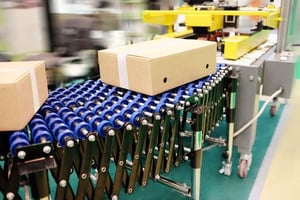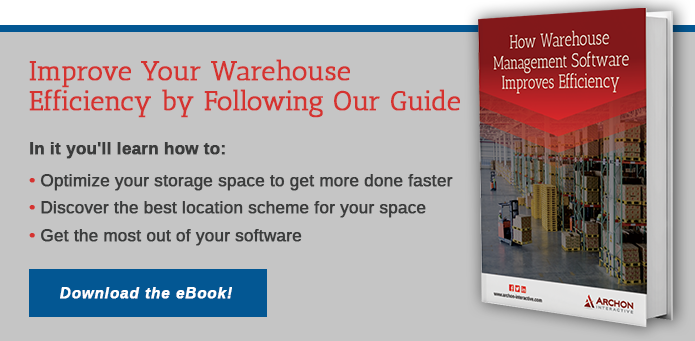 Within any warehouse, each item passes through several stages. From the moment a product arrives at the receiving dock until it is shipped out to a customer, you should be tracking its movements. Ideally, your warehouse will be set up in a pattern that minimizes the number of individual moves a product makes within your warehouse and maximizes efficiency when it comes to put away and picking.
Within any warehouse, each item passes through several stages. From the moment a product arrives at the receiving dock until it is shipped out to a customer, you should be tracking its movements. Ideally, your warehouse will be set up in a pattern that minimizes the number of individual moves a product makes within your warehouse and maximizes efficiency when it comes to put away and picking.
Here are the stages of typical item flow:
- Receiving - Your Warehouse Management System should be recording items as soon as the pallets come off the truck. Some companies fall behind and wait to check in items until they get caught up on the previous truck. This leads to a constant backlog of products sitting on the dock waiting to be made available. Create a workflow that allows you to scan pallets immediately for best results.
- Sorting and Repacking - Some items can be stored in complete pallets. Other items need to be broken down into packs or individual items. Sorting things now will save you from having to put them into bulk storage and then bring them back out to break them down later.
- Put Away - Many warehouses have two different types of storage: static and dynamic. Your static storage locations tend to be for bulk items and items that will remain in place for an extended period of time. Your dynamic storage spaces shift with the latest trends or storage space needs. As you go through stage 2, you should be pulling out the items that are staying on pallets and sending them off first since they don't require any additional work. There are several ways to boost warehouse efficiency during this stage.
- Replenishment - Your picking team has been hard at work filling customer orders out of your dynamic storage slots. When those pick locations are running low, they will need to be replenished out of your bulk or overstock storage locations.
- Picking - Line items from orders are allocated to inventory that is in your forward picking locations. The item is picked from its location and transported with other outgoing products to packing/shipping.
- Packing/Shipping - This is typically where final quality control measures are taken to ensure the accuracy of the orders going out. Then the items are sealed into boxes, and you can capture shipment tracking numbers and other important info into your WMS. Having this data available in the future will increase warehouse efficiency if you have to track down a lost order.
These are the six major stages of item flow through any warehouse. Your warehouse efficiency can improved by making small changes to any of these steps and eliminating as many extra moves as possible for your products. Your WMS should help you manage each stage and provide necessary information at each step. For instance, information on where and how a particular part will be stored needs to be available in receiving so that it can be taken into account during sorting and repacking. The quicker each step goes, the sooner your goods can get into your customers' hands.




